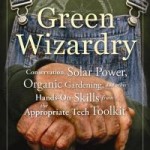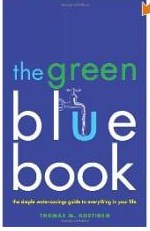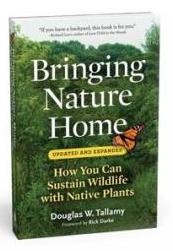Looking for more information about sustainable design, construction and living? Here are some great resources:
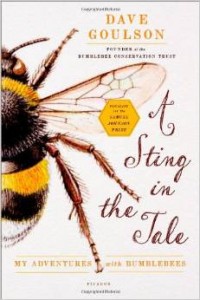 A Sting in the Tale: My Adventures with Bumblebees by Dave Goulson. Would you like to read an entertaining book that contains tons of information about bumblebees – their importance to the natural world and our food chain? Then read this wonderful, funny, enlightening and information packed gem. Not the funniest part but a little snippet of information for you to ponder, “When you next squirt Heinz tomato ketchup on to your fish and chips, reflect on the nature of the modern world. Your ketchup was most likely made in a factory in the Netherlands from tomatoes grown in Spain, pollinated by Turkish bees reared in a factory in Slovakia. I’m sure that our food supply chain doesn’t need to be quite so convoluted. You might also reflect that every cucumber, aubergine, runner bean, blackcurrant and pepper that you eat was almost certainly pollinated by a bumblebee, perhaps reared in a factory, or perhaps a wild bee. A tin of baked beans largely comprises navy beans that were pollinated by bumblebees, and a sauce made from bumblebee-pollinated tomatoes. We owe these little creatures for all that they give us…”
A Sting in the Tale: My Adventures with Bumblebees by Dave Goulson. Would you like to read an entertaining book that contains tons of information about bumblebees – their importance to the natural world and our food chain? Then read this wonderful, funny, enlightening and information packed gem. Not the funniest part but a little snippet of information for you to ponder, “When you next squirt Heinz tomato ketchup on to your fish and chips, reflect on the nature of the modern world. Your ketchup was most likely made in a factory in the Netherlands from tomatoes grown in Spain, pollinated by Turkish bees reared in a factory in Slovakia. I’m sure that our food supply chain doesn’t need to be quite so convoluted. You might also reflect that every cucumber, aubergine, runner bean, blackcurrant and pepper that you eat was almost certainly pollinated by a bumblebee, perhaps reared in a factory, or perhaps a wild bee. A tin of baked beans largely comprises navy beans that were pollinated by bumblebees, and a sauce made from bumblebee-pollinated tomatoes. We owe these little creatures for all that they give us…”
Creative Conspiracy: The New Rules of Breakthrough Collaboration by Leigh Thompson. Not necessarily a book 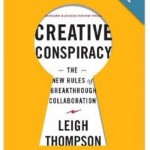 focused on sustainability but I think that the only way to identify sustainable solutions is through collaboration and this book provides new thinking about how to get your group to maximize their creative output. It provides actionable insights in to how groups function and a path for how to lead them productively and successfully. I especially liked the chapter entitled, “Transforming Conflict Into Creativity”; useful, informative and actionable.
focused on sustainability but I think that the only way to identify sustainable solutions is through collaboration and this book provides new thinking about how to get your group to maximize their creative output. It provides actionable insights in to how groups function and a path for how to lead them productively and successfully. I especially liked the chapter entitled, “Transforming Conflict Into Creativity”; useful, informative and actionable.
Green Wizardry by John Michael Greer is one of those great books that you can open to any chapter and glean an enormous amount of great information. I especially like his afterword entitled “Why It Matters” – pithy, insightful and well written. Greer has taken on a huge challenge – to provide a tool kit for all of us to increase our independence and create a more livable world for ourselves and for others. This book is a how to – to grow food, be energy aware and independent and to think beyond ourselves as individuals and see ourselves and our actions as part of a whole system. It may seem overwhelming at first but if you nibble around at the edges for a bit you will find you may just dive in and become a green wizard!
Eco Literate by Daniel Goleman. How do we encourage younger generations to protect the natural world? We engage and encourage our teachers. This case story based book illustrates how educators can achieve excellence in the classroom while fostering a sense of stewardship in our children…and hopefully ourselves through them.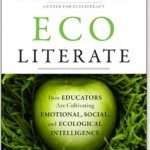
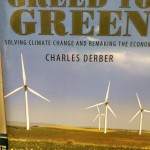 Good Works by Philip Kotler.
Good Works by Philip Kotler.
Greed to Green by Charles Deber. Explore the idea of changing Capitalism to solve climate change.
Conscious Capitalism by John Mackey and Raj Sisdoia. How do you put triple bottom line theories into practice? Read  this and work to revolutionize the capitalist model to focus on people and the environment while maximizing profit.
this and work to revolutionize the capitalist model to focus on people and the environment while maximizing profit.
The Upcycle by William McDonough and Michael Braungart uses the power of story to invite us all to be creative in finding ways to not just recycle the old but develop new, creative and innovative ways to find sustainable solutions to worldwide problems.
The Green Blue Book by Thomas Kostigen provides super easy ways to save water but not just by turning off the tap. Mr. Kostigen challenges us to think about how every purchase and move we make uses and consumes water so that we can be water smart consumers in the bath, the kitchen, the grocery store and the mall.
The Integrative Design Guide to Green Building by 7 Group and Bill Read – Integrated Project Delivery or IPD is a means 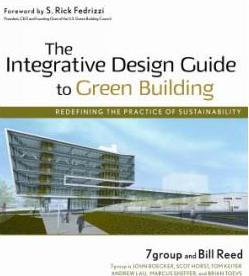 of designing and building in an efficient and collaborative manner with strong communication between all the project team members from the architect to the electrical contractor. This handbook is an excellent primer and tool for every one on the team.
of designing and building in an efficient and collaborative manner with strong communication between all the project team members from the architect to the electrical contractor. This handbook is an excellent primer and tool for every one on the team.
Natural Capitalism: Creating the Next Industrial Revolution by Lovins, Lovins and  Hawken – What if capitalism was based on what is good for the world is good for us instead of what we want is what is best? The authors put forward a new model for capitalism that puts the interests of the environment at the forefront. Thought provoking and actionable.
Hawken – What if capitalism was based on what is good for the world is good for us instead of what we want is what is best? The authors put forward a new model for capitalism that puts the interests of the environment at the forefront. Thought provoking and actionable.
Animal, Vegetable, Miracle by Barbara Kingsolver – Being self sufficient is a challenge and an opportunity – read this and be inspired to plant your own little plot, learn to can and be inspired to think about food and life.
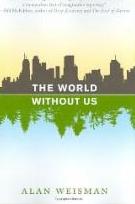 The World Without Us by Alan Weisman – What happens when there are no people in the world? Nature happens. Far reaching fiction that makes you sit back and think.
The World Without Us by Alan Weisman – What happens when there are no people in the world? Nature happens. Far reaching fiction that makes you sit back and think.
Slug Bread & Beheaded Thistles by Ellen Sandbeck – Every time I open this book I learn a new way to foil insects, clean something or stop weeds. Witty, funny and full of information. This book should be on your shelf.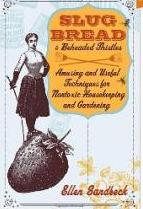
Bringing Nature Home – How you can sustain wildlife with native plants by Douglas W. Tallamy – This is an excellent primer for anyone with a bit of yard. Filled with color photographs, Douglas Tallamy explains why native plants provide the essential nutrients and habitat for the insects and creatures that are native to our ecosystem and why it is important to sustain their health and vitality. Worth reading and returning to often.
Noah’s Garden and Planting Noah’s Garden both by Sara Stein – Reminders that we live on earth and have a responsibility for its healthy ecology. Sara is inspiring as she details her transformation from conventional gardener to natural landscaper and ecologist.
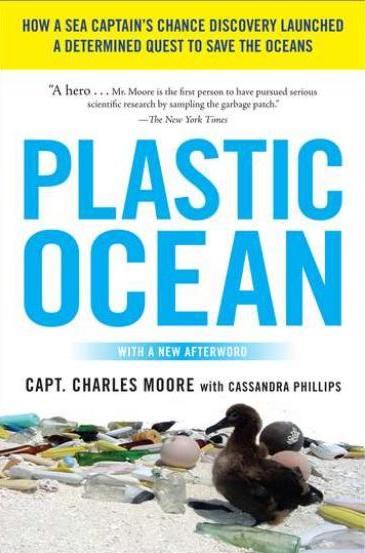 Plastic Ocean by Capt. Charles Moore with Cassandra Phillips – Plastic doesn’t just disappear and the recycling system may not work as well as we all wish. In fact there is a huge collection of plastics of all sorts floating in the Pacific ocean. Through consumer action change can happen but first get educated – Capt Moore provides a clear and concise study of the situation and its implications.
Plastic Ocean by Capt. Charles Moore with Cassandra Phillips – Plastic doesn’t just disappear and the recycling system may not work as well as we all wish. In fact there is a huge collection of plastics of all sorts floating in the Pacific ocean. Through consumer action change can happen but first get educated – Capt Moore provides a clear and concise study of the situation and its implications.
Chickens in the Backyard – A Beginner’s Guide by Rick and Gail Luttmann – If you have ever thought about raising and keeping chickens for egg or meat production, this is the book for you. The illustrations are a little hokey but the content is easy to understand, helpful and pertinent.
World Without Fish by Mark Kurlansky – A children’s book that we all should read that explains the situation and the need for sustainable fishing practices.
need for sustainable fishing practices.
Forgotten Rain: Rediscovering Rainwater Harvesting by Heather Kinkade-Levario – An easy to understand yet very thorough introduction to rainwater harvesting that provides rationale, examples and how-to’s for designing your system.
Design for Water by Heather Kinkade-Levario – A more comprehensive manual for the design of passive rainwater systems that is useful alone or in tandem with Forgotten Rain.
The Big Thirst by Charles Fishman – Comprehensive, well written book about drinking water shortages, why we should be concerned and what we should do now to conserve.
The Smart Growth Manual by Duany, Speck and Lydon – Filled with examples and lots of illustrations, this manual presents New Urbanism ideas and backs them up with real life examples.
Homes for a Changing Climate by Klingenberg, Kernagis and James available from Passive House US – Using a case study approach, the authors present Passive House construction so that it is understandable, compelling and interesting. The many illustrations and ‘nutrition label’ presentation make this a very understandable book.
A Place of My Own by Michael Pollan – Not necessarily a book about sustainable construction but it is one that will make you yearn for a place or a space that is designed by, built by and made for you – a special place to call your own.
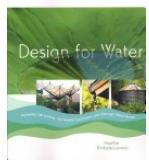 The Integrative Design Guide to Green Buildings by 7Group and Reed – A textbook
The Integrative Design Guide to Green Buildings by 7Group and Reed – A textbook 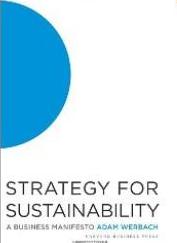 approach to the integrative design process. An excellent presentation of the process and the reasons for the process.
approach to the integrative design process. An excellent presentation of the process and the reasons for the process.
Strategy for Sustainability by Adam Werbach – Sustainability can’t be achieved by following business as usual methods. Involving the consumer throughout the product chain brings products to market that meet the pressing needs of society.
The Carbon Buster’s Home Energy Handbook by Godo Stoykek – A little dated but full of 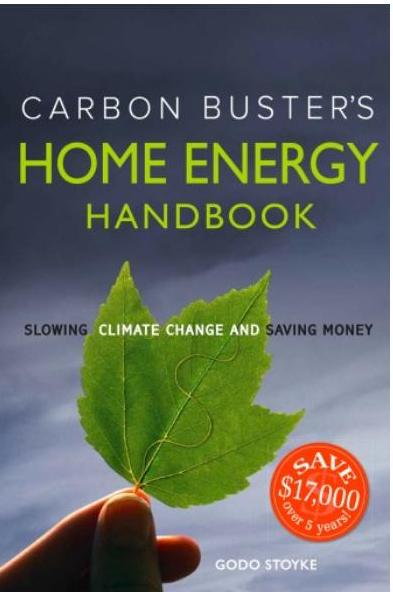 useful detail, information and quick facts that can save you money and maybe help slow climate change.
useful detail, information and quick facts that can save you money and maybe help slow climate change.
Energy Free: Homes for a Small Planet by Ann V. Edminster – An excellent primer and handbook for anyone thinking about building a high efficiency home.
Green from the Ground Up by David Johnston and Scott Gibson – This book is labeled a builder’s guide but I think its 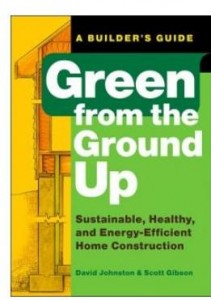 well presented and written explanations make green construction accessible to anyone interested in building a new high efficiency home.
well presented and written explanations make green construction accessible to anyone interested in building a new high efficiency home.
Force of Nature: The Unlikely Story of WalMarts Green Revolution by Humes – A well written presentation of how WalMart recognized the positive economic realities of ‘going green’. The presentation of Appreciative Inquiry provides lessons that can be used at home, school and at the office.
cradle to cradle: Remaking the Way We Make Things by McDonough and Braungart – Makes you stop and think and then, hopefully, act. Cradle to cradle presents the case for designing and manufacturing products with their full life cycle in mind so that once used they can be disassembled, repurposed or refashioned. Look also at www.mbdc.com McDonough’s design firm and www.c2ccertified.org for Cradle to Cradle products and certification.
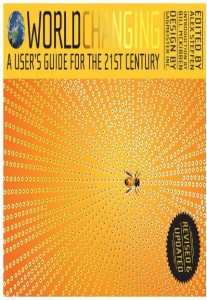 World Changing: A Users Guide for the 20th Century by Steffen – A guidebook for sustainable living presented in short, digestible articles.
World Changing: A Users Guide for the 20th Century by Steffen – A guidebook for sustainable living presented in short, digestible articles.
The Transition Handbook: From Oil Dependency to Local Resilience by Rob Hopkins – A step-by-step manual for transforming your community.
Green Beginnings – The Story of How We Built Our Green & Sustainable Home by Avrim and Vicki Topel – If you are thinking about building a new, sustainable home and want a first hand account of: the decisions you will face, the joys and challenges you will encounter, and the process from start to finish this is a good start. Some of the information is dated because technology and products in sustainable construction are changing at such a rapid pace but Ave and Vicki present the information in an inviting manner that makes the highly technical easy to understand. In the interest of full disclosure, I was the General Contractor for the construction of this home and am mentioned a few times…
Environmental Building News – a newsletter published by BuildingGreen, Inc. – Not a book but if you really want the in-depth skinny on everything in green construction then subscribe to EBN. It provides clear, well researched and well written articles about everything from insulation to passive solar heating. They have been writing this newsletter for a long time and have a great knowledge base and library.
